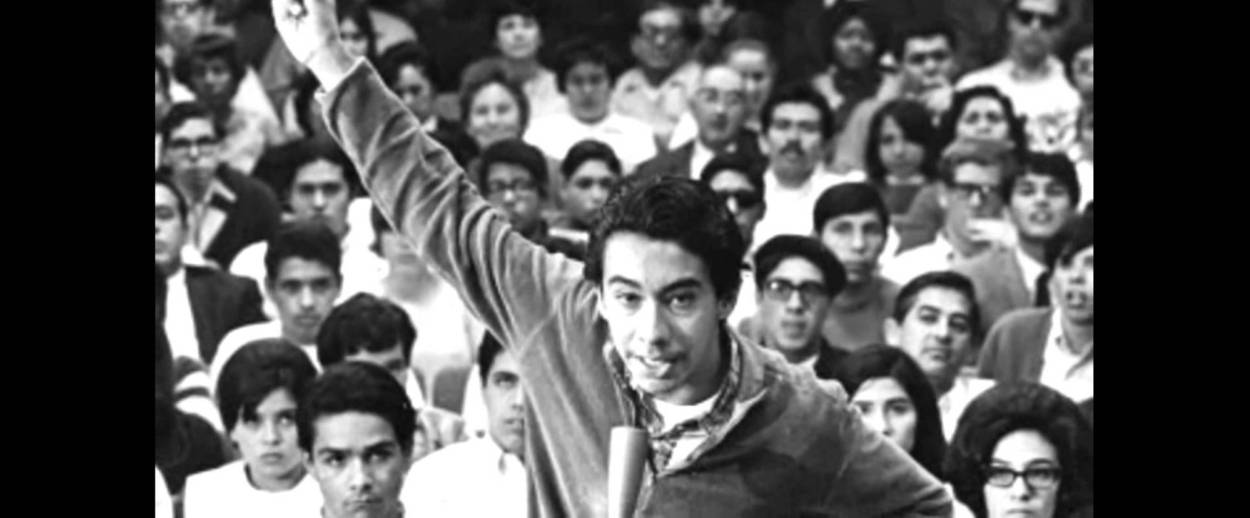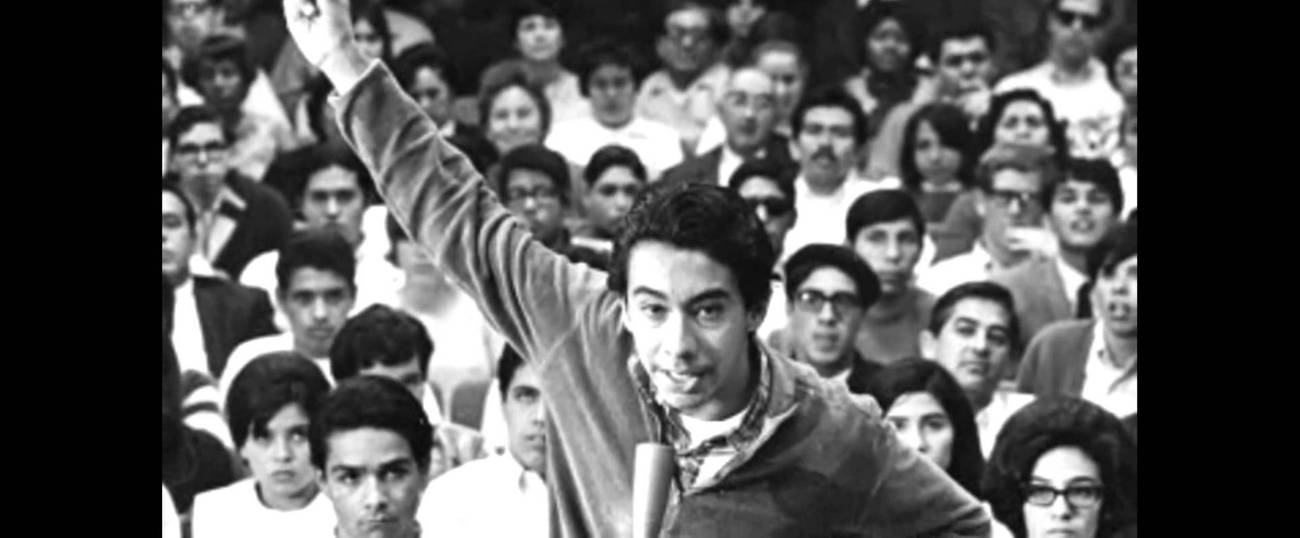How a Jewish Youth Camp Birthed the 1968 East L.A. Chicano Student Walkouts
‘The young Mexican American is tired of waiting for the Promised Land’




On March 1, 1968, about 250 students led by drama kids upset that the principal canceled an upcoming performance of Neil Simon’s Barefoot in the Park tried to walk out of Wilson High School in Los Angeles. The action sparked what’s now known as the East Los Angeles Blowouts, in which thousands of Chicano students left their classrooms to protest rundown campuses, racist teachers, and apathetic counselors. The marches and rallies brought national attention to the Chicano civil rights movement, created a generation of leaders, and still inspire activists 50 years later.
And this important moment in Chicano history happened in large part because of a rabbi and his Jewish youth camp.
Camp Hess Kramer in wealthy Malibu is about an hour and a half away and a world apart from the working-class, Mexican-American high schools of East L.A. But its oak-filled hills and cozy cabins, site of Reform Jewish teen retreats for more than 65 years, has hosted an annual camp for Chicano students for almost as long. Why a Jewish facility hosted such a uniquely Mexican-American event is all gracias to Rabbi Alfred Wolf, who long administered Hess Kramer for Wilshire Boulevard Temple. The interfaith pioneer was a longtime ally to Los Angeles Chicanos, standing with them on issues of police brutality and even once allowing protestors to use the Wilshire Boulevard Temple parking lot as a base to protest arch-conservative Archdiocese of Los Angeles Cardinal Francis McIntyre, who held services at St. Basil’s Church just a block away.
Wolf opened up Hess Kramer almost from its start in 1952. In 1963, in his capacity as chair of the Los Angeles County Commission on Human Relations, he helped to organize the first of what was eventually called the Chicano Youth Leadership Conference (CYLC). Its purpose was to get the best and brightest Mexican-American high schoolers in Southern California together for a weekend of introspection, growth, and leadership training. Wolf provided Hess Kramer; major financial sponsorship came from Tobias Kotzin, a Jewish trouser manufacturer who employed hundreds of Mexican-American women at his Los Angeles factory.
About 150 students got on buses from East Los Angeles on Friday and returned home on Palm Sunday. The conference ostensibly operated like any other Jewish youth camp. Boys and girls slept in separate cabins, with college-age counselors and adult administrators to watch over them. There was an opening dinner, a Saturday night sock hop, and time for meals and games in between lectures and workshops. “We wanted to not only keep the kids busy throughout the day,” remembered Sal Castro, a Los Angeles social science teacher who served as a counselor at the inaugural CYLC, “but also to even exhaust them in order to keep in check their hormones.”
And in this safe space, the future of the Chicano movement began to get discussed. Topics at that first conference included “Are Mexican-Americans timid and hesitant in aspiring to advance?” and “Should agencies other than those existing be set up to help these people?”
“It was a great experience and a beautiful setting,” said Gloria Arellanes, who attended the first one and went on to become an influential Chicana feminist, in the 2015 book The Chicano Generation: Testimonios of the Movement. “For the first time, I met many other Chicanos from the Greater LA area and had an opportunity in the organized discussion sessions and outside of them to learn the conditions of Chicano students in other schools.”
The Hess Kramer retreat proved such a success that adults quickly organized their own. That fall, 150 educators, politicians, and businesspeople attended a three-day conference keynoted by L.A. human relations commission member Julius M. Klein. “You must rid yourselves of this sense of defeatism and sense of inferiority,” the Los Angeles Times quoted him as telling his Mexican-American audience. “I was impressed by the quality of people attending this conference. Don’t underestimate your people…you are ready.”
Castro and other organizers continued the youth and adult retreats through the 1960s. But he increasingly became frustrated as the decade progressed with the lack of progress in East L.A. schools. In 1967, Castro and his Hess Kramer attendees openly began to wonder what would happen if Chicano students simply boycotted their schools until trustees paid attention. Southern California got a hint of this rebellion in a half-hour documentary called Today, Not Mañana, which filmed that year’s CYLC and featured shots of Hess Kramer’s picturesque grounds. “The main impression we bring back,” the host concluded, “is that of a mood of impatience, a growing sense of urgency. The young Mexican American is tired of waiting for the Promised Land.”
The following year, high school students marched in the blowouts. Many of its leaders had attended CYLC in 1967, just like the college students who served as their advisors. And their mentor? Castro.
While the adult Hess Kramer shindigs eventually ended, CYLC continued for decades at the camp with Castro as its main organizer (they officially ended in 2009 after funding ran out, although it has run intermittently ever since through the Sal Castro Foundation, even after the passing of its founder in 2013). The retreat served as a training ground for thousands of students—prominent alumni include former Los Angeles mayor and current California gubernatorial candidate Antonio Villaraigosa, retired California Supreme Court Justice Carlos Moreno, and Hollywood producer Moctezuma Esparza, who helped to organize high schoolers as a UCLA undergrad in 1968 and produced a 2006 HBO movie on the subject.
“The conferences served to politicize a new generation of Chicano students who participated not only in the blowouts, but in the Chicano Movement as a whole,” wrote Castro’s biographer, UC Santa Barbara professor Mario T. Garcia, for a 2006 one-day conference held at UCLA to celebrate the CYLC. Castro put it better: “Indeed, one might say that the cradle of the Chicano Movement in L.A. was to be, ironically, found here in the Malibu mountains.”
At a Jewish youth camp.
Gustavo Arellano writes a weekly column about California for the Los Angeles Times.